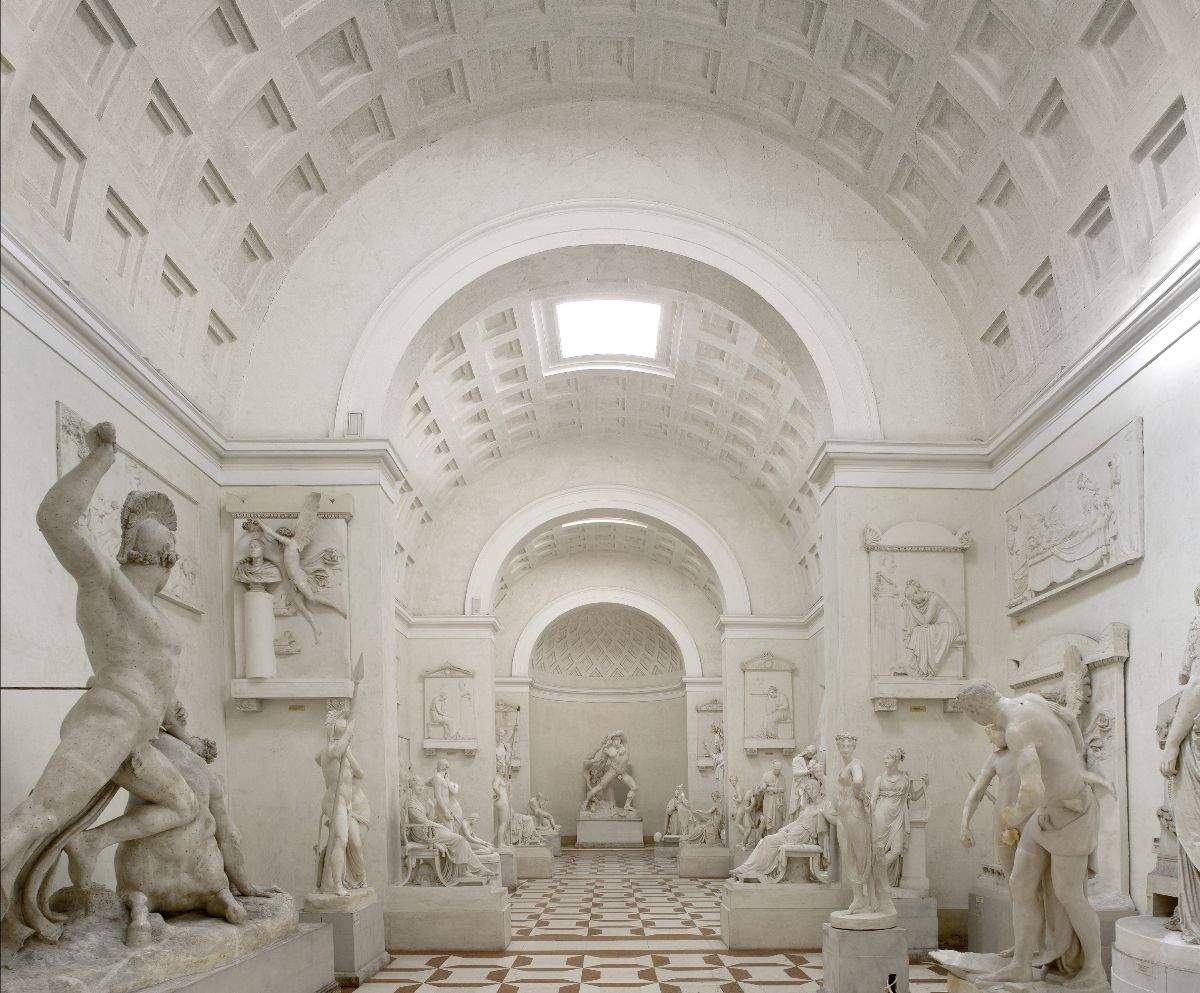Sought after and admired on an international scale, Antonio Canova (Possagno, 1757-Venice, 1822) had as patrons the most influential personalities of Europe contemporary with him: sovereigns, pontiffs and nobles from the various European courts all the way to the United States of America. It is these relationships, along with the historic and unbreakable link between art and power, that the exhibition Canova and Power. The Giovanni Battista Sommariva Collection, conceived by Vittorio Sgarbi and curated by Moira Mascotto and Elena Catra, aims to highlight.
The exhibition, scheduled from March 18 to Sept. 3, 2023, at the Museo Gypsotheca Antonio Canova in Possagno, which holds the historical and artistic legacy of the greatest sculptor of the Neoclassical period, investigates for the first time the complex figure of Giovanni Battista Sommariva and his precious collection that included nine works. These include five important marbles by Canova himself as well as those by Francesco Hayez, Bertel Thorvaldsen and Pierre Paul Prud’hon, some of which have been exceptionally brought together for the occasion at the Museo Gypsotheca Antonio Canova in Possagno.
For the first time the marble work depicting the Apollino, from the Collezioni Comunali d’Arte in Bologna, will be on public display after restoration supported by the Canova Museum and carried out by the Opificio delle Pietre Dure in Florence. Also lending prestige to the exhibition are paintings and sculptures from public and private collections, both national and international.
The exhibition’s itinerary is divided into three sections, the first of which is devoted to the relationships Canova had with the protagonists of political, cultural and economic power in Lombard circles. These include Napoleon and some members of the Bonaparte family, his friend Giuseppe Bossi, and even the wealthy collector Giovanni Battista Sommariva. It is precisely to the refined patron, a prominent figure in the political world between the 18th and 19th centuries and a trusted man of Napoleon, that the second section of the exhibition is dedicated, which delves into the extraordinary relationship that bound him and Canova throughout their lives, sharing a love of art and a passion for collecting. Finally, the third section of the exhibition allows visitors to admire a number of works related to Canova’s Roman workshop, revealing the organization of this industrious atelier, the forge of those masterpieces preserved today in the world’s most important museums.
A calendar of guided tours, educational workshops, lectures and the catalog, with contributions and essays bearing the signatures of Vittorio Sgarbi, Fernando Mazzocca, Luigi Mascilli Migliorini, Elena Lissoni and Maria Angela Previtera, Daniela Gallo, Clario Di Fabio, Antonella Mampieri, Giuseppe Amoruso and the Opificio delle Pietre Dure will allow visitors to delve deeper into the themes and works featured in the exhibition.
Lender list: SABAP Metropolitan City of Milan; Gian Enzo Sperone Collection; Brera Academy of Fine Arts, Milan; Musée national des châteaux de Malmaison et Bois- Préau; Napoleonmuseum Arenenberg; Musei Civici d’Arte Antica di Bologna, Collezioni Comunali d’Arte; Roberto Sgarbossa Collection; Swiss Confederation, Museo Vincenzo Vela, Ligornetto; Archivio Papafava Antonini dei Carraresi, Novello Papafava fund; Rome, Napoleonic Museum by concession of the Ministry of Culture-Regional Directorate Museums of Tuscany-Florence; Nuova Arcadia Gallery, Padua, Fondazione Musei Civici di Venezia, Correr Museum; Sicilian Region, Assessorato dei Beni Culturali e della Identità Sicilian Department of Cultural Heritage and Sicilian Identity - Regional Interdisciplinary Museum of Messina; Civic Museums of Udine - Cabinet of Drawings and Prints; Civic Museum of Asolo; and all those who preferred to remain anonymous.
The event has the patronage of: National Committee for the Celebrations of the Bicentenary of the Death of Antonio Canova, the Municipality of Possagno, the Veneto Region, the Province of Treviso, the Municipality of Possagno, the European Commission, the Ministry of Culture, and the Chamber of Commerce Industry Handicrafts Agriculture of Treviso-Belluno.
Museum opening hours Tuesday through Friday, 9:30 a.m. to 6 p.m. Saturday, Sunday and holidays from 09:30 to 19:00. Last admission one hour before closing. Special openings on holidays (Easter Monday, April 25, May 1, June 2, August 15, November 1, December 26).
Info and contacts Museo Gypsotheca Antonio Canova Via A.Canova 74, Possagno (TV) www.museocanova.it
 |
| The relationship between Canova and power on display in Possagno |
Warning: the translation into English of the original Italian article was created using automatic tools. We undertake to review all articles, but we do not guarantee the total absence of inaccuracies in the translation due to the program. You can find the original by clicking on the ITA button. If you find any mistake,please contact us.